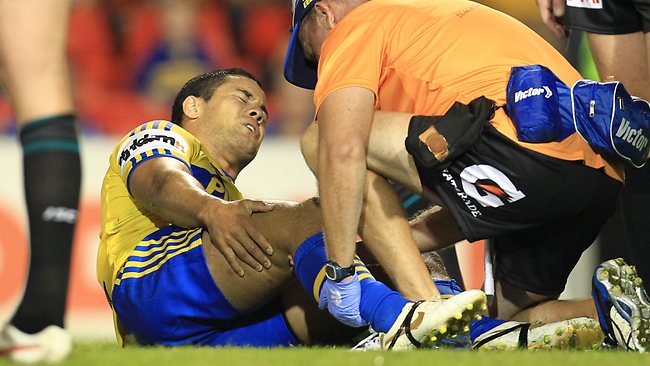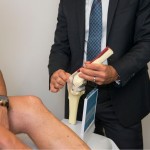
What is a patella dislocation?
Commonly a result of a traumatic sporting injury such as excessive twisting or jumping forces, or a direct blow (less common). A patella dislocation refers to the tearing of the connective tissue surrounding the patellofermoral joint between the knee cap (patella) and thigh bone (femur), resulting in a displacement of the knee cap from its groove.
If a patella dislocation occurs, there is an approximately 25% chance of it happening again so it is advised to seek specialist help from Dr Shidiak to help prevent further dislocations. In younger patients the risk of redislocation can reach 100%.
What are the symptoms?
During a sporting injury, patients typically experience sudden and intense pain described as a ‘popping out’ sensation at the front of the knee. It is not uncommon for the area surrounding the knee to have rapid onset swelling within the first few hours following an injury, or be painful to touch. More obviously, there may also be visible abnormalities of the knee, such as the knee cap moving out of position. In some cases, there may be a clicking or grinding sound when bending or straightening the knee.
For those who have recurrent patella dislocation, patients are usually able to move the knee cap back into its normal position, but can still trigger an ache or reaggravate sharp pains whilst engaging in physical activity. This is usually in relation to activities that require continuous bending and straightening of the knee, such as walking, running, squatting, lunging, jumping or attempting to kneel.
How to treat a patella dislocation
For patients who have dislocated their patella for the first time, non-operative treatments are always attempted first. This usually involves physiotherapy and appropriate exercise. For recurrent dislocations (recurrent instability), surgery is often recommended to repair or reconstruct the medial patellofemoral ligament and bone alignment. This is becoming more common for high level athletes, especially when their day to day life is being impacted or their knee cap continuously pops out of place. The type of surgery performed depends on the patient and any potential risk factors associated, ultimately helping to prevent further dislocations.
When can patients return back to sport?
For athletes, a patella dislocation usually means allowing enough time to properly recover before returning back to their sport. Ensuring the patella is stable and realigned will not only get patients back to their regular sporting commitments, but can also delay the onset of degenerative issues such as arthritis from developing in the future.
Recovery time usually depends on a few factors, such as the condition of the patient’s knee prior to dislocation and whether they regularly participate in sporting activity. For a healthy and active athlete the recovery times are generally faster and return to sport in a few months. Physiotherapy is always recommended to treat and strengthen the surrounding muscles, helping to prevent dislocations in the future.
If you suspect you have dislocated your patella, or have recurrent dislocations, professional assessment and treatment is recommended as soon as possible. Dr Shidiak has extensive experience with high performing athletes and is very accustomed to treating this type of injury, and works closely with his patients to help them recover and get back to what they love doing the most. Please call our friendly reception on (02) 9806 3333 to discuss your options and arrange a consultation with Dr Shidiak.


